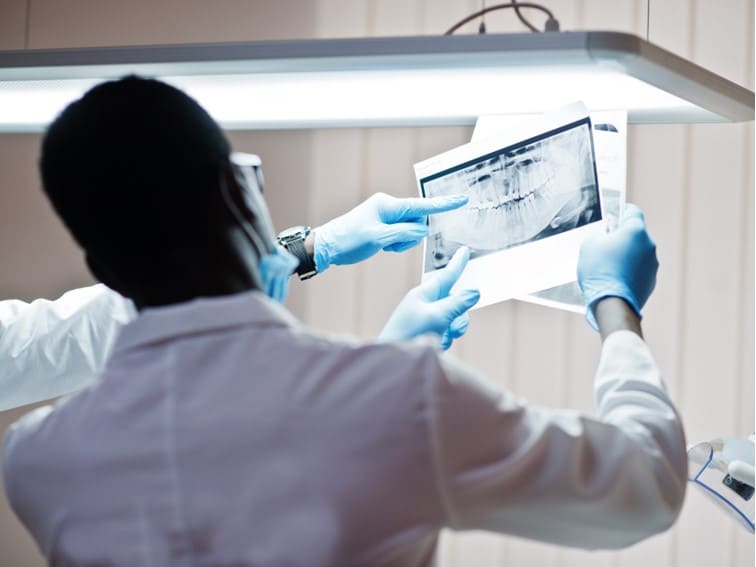
Receding gums causes, symptoms & Treatment | Gnathos Dental Clinic
Your gums recede from their position on the teeth’ surface as they pull back. When this happens, your teeth’s roots get exposed. It’s a very common finding in a severe form of gum (periodontal) disease. When the delicate root of the tooth exposes, it becomes susceptible to damage.
This condition is often a consequence of poor oral hygiene and oral health. It may lead to bad breath, loosening of teeth and premature tooth loss, and other serious health issues.
Receding gums causes
The most prominent or major factor responsible for this condition is poor oral or dental hygiene. The other factors may include hormonal fluctuations in men and women, high blood pressure, uncontrolled diabetes, brushing teeth too hard, aggressive brushing, hardened plaque buildup (tartar), and smoking. Your family history can also contribute to this condition as the condition runs in families.
Periodontal disease
A progressive form of gingivitis, i.e., periodontal disease begins with the buildup of bacteria and plaque within the gums and teeth. Plaque and tartar deposits cause severe damage to teeth and gums – which then fall back from the teeth. As the disease becomes progressively severe, deep pockets form between teeth and gums damaging the jaw bone between the teeth. More bacteria gain entry into these pockets significantly increasing the plaque and tartar formation.
Dry Mouth
If you have this condition, you will become prone to dental diseases such as gingivitis and periodontitis. Use of certain medications and mouth breathing due to obstructive sleep apnea can cause dry mouth. If you have a dry mouth, you produce less saliva – which means a breeding ground for bacteria to flourish and proneness for gum infection and disease.
What are the symptoms of receding gums?
Your gums by their appearance indicate that you have this problem. You have visibly shrunken gums, pain at the gum line, bad breath, red swollen gums, loose teeth, exposed teeth roots, and bleeding after flossing or brushing.
Diagnosis
A dentist at Gnathos Dental Clinic diagnoses receding gums or periodontal disease and its different stages. A thorough dental examination reveals dental issues. The dentist uses a probe to measure the depth of dental pockets.
A normal pocket size can be anything in the range of 1 to 3 millimeters. If the pocket size is larger than this, then it indicates gum disease. Receding gum and severe form of gum diseases are often referred to a periodontist.
Treatment
Treatment depends on the symptoms, extent of damage, and severity of the disease. Several types of treatments are available based on the severity of the condition (gums condition and tissue loss). If you go to a dentist, have the condition diagnosed, and start the treatment, the better is the outcome.
Your dentist will deep clean your teeth and prescribe antibiotics. To treat the underlying cause of the disease (gum recession), your dentist also prescribes topical antibiotic gel, antiseptic chips, and antimicrobial mouthwash. In the worse and more severe cases of gum disease (gum recession) due to periodontal disease, your periodontist will treat the condition with gum grafts and flap surgery.
To know more about receding gums causes, symptoms, Diagnosis & Treatment, call Gnathos Dental Clinic and book an appointment.
